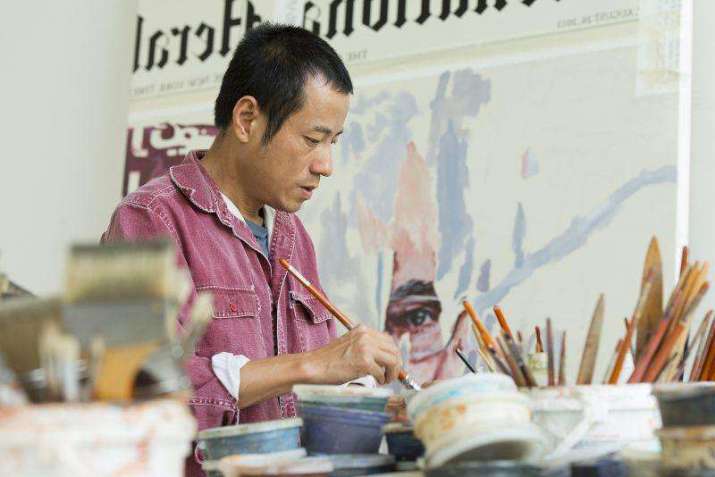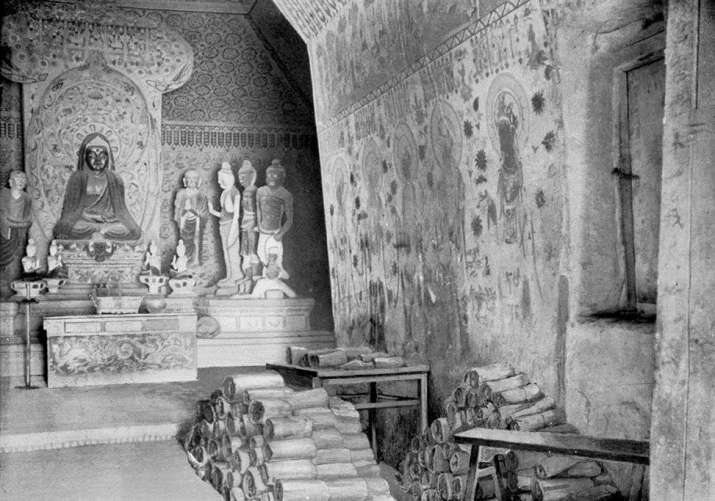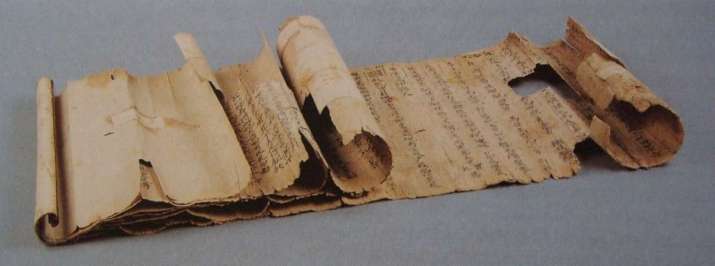NEWS
Stanford University Art Professor Translates Dunhuang Narrative into Contemporary Art
 Xiaoze Xie at work. From scribd.com
Xiaoze Xie at work. From scribd.comAn ambitious artist is striving to execute his vision of narrating the tale of Dunhuang to modern audiences through his art project titled “Amber of History,” which Xiaoze Xie, professor of art at Stanford University in California, developed during his 25-day art residency at the Mogao Cave complex last summer. On 21 June, Xie presented his work-in-progress, inspired by Cave 17, in a public exhibition at Stanford.
The artist residency program at Dunhuang in northwestern China was co-sponsored by the Tsinghua Institute of Culture and Creativity, and the San Francisco-based Dunhuang Foundation, and seeks to provide people with a contemporary dialogue with the history of Dunhuang and China.
“If you know nothing about Buddhist art, you have no way of contextualizing what you see in Dunhuang, so we thought by engaging contemporary artists today, it would give the American audience a starting point of conversation,” said Dunhuang Foundation executive director Christian Hudak. (China Daily)
 Aurel Stein’s 1907 view of Mogao Cave 16, with a portion of the manuscripts from Cave 17. From pinterest.com
Aurel Stein’s 1907 view of Mogao Cave 16, with a portion of the manuscripts from Cave 17. From pinterest.comCave 17, known as the “library cave,” was used to store some 60,000 manuscripts, scrolls, ritual equipment, fine paintings, dozens of statues, and banners dating mostly from the ninth to early 11th centuries. It was originally created as a shrine for a ninth century monk named Hong Bing, but the cave was sealed early in the 11th century for reasons now unknown. In 1900, a Daoist monk named Wang Yuanlu re-opened the cave and discovered the collection it held. He sold many of the manuscripts to scholar-explorers, and the collection is now scattered across the globe.
During a speech at the art exhibition, Xie showed the audience a photo he had taken at Dunhuang of a large rock bearing the inscription “Dunhuang is the history of sorrow for our academia” by Chinese historian Chen Yinke. Chen lamented the loss of the scrolls and other objects taken from the various caves at the complex, which he felt had a negative effect on Dunhuang research in China.
Xie related that he had spent a week researching Cave 17 and taking long walks into the desert surrounding the site for inspiration, before moving to his studio to work on the project. The result of his efforts is a long scroll of brush and ink drawings, combined with diagrams, calligraphy, and quoted images, though which Xie confronts the emptiness of cave and its history of loss, absence, and trauma, filling the space with his imagination.
 Scrolls from Dunhuang. From pinterest.com
Scrolls from Dunhuang. From pinterest.comThe drawings form the base of a number of sculptures/installations through which Xie seeks to represent his imagined versions of the “original order” of the cave. During his presentation he explained three versions of this original order titled Texture of Civilization, Re-imagination of Colors, and Symphony of Language.
Texture of Civilization is based on the handwritten scrolls of Buddhist sutras and other documents, which made up the majority of the objects in the cave. According to Xie, 62 per cent of the materials used for the scrolls were silk, 14 per cent were linen, and 24 per cent were paper.
“I imagine all the objects lose their forms, and these materials melt and separate to become layers of sediment,” said Xie. (China Daily)
This version of the work represents the layers of various materials that have settled horizontally in different colors based on Xie’s interpretation of typical color combinations of the Buddhist murals at Dunhuang.
In Symphony of Language, Xie portrays the popular characters found in the sutras floating in space in a transparent cast. All characters are rendered in different styles of calligraphy found in the Dunhuang artworks, mostly from the Sui and Tang dynasties. Some characters are fusions of different styles.
Xie explained: “The characters vary in different shades of black — the shades are increasingly dense at the bottom until they become solid black.” (China Daily)
Xie said his work is in progress and will create more versions and miniature models of his sculpture/installations while seeking further funding for his project. He will return to Dunhuang later this year to continue his studies and complete the scroll drawings.
See more
Art project expected to facilitate China-U.S. exchanges (XinhuaNet)
Artist helps Dunhuang speak to present (China Daily)
Casting the Void: Reinvention of the Library Cave in Dunhuang (Stanford Arts)
Related news from Buddhistdoor Global
English Version of Digital Dunhuang Offers Virtual Tour of Mogao Caves
Ca’Foscari University of Venice Hosts First Dunhuang Exhibition in Italy
Art Gallery in China Displays 3D-Printed Replicas of Ancient Buddhist Statues
Conservationists Turn to Digital Solutions to Preserve and Share the Treasures of Dunhuang’s Mogao Grottoes
Related features from Buddhistdoor Global
Dance at Dunhuang: Part One
Dance at Dunhuang: Part Two – The Case for the Feitian
Dance at Dunhuang: Part Three – The Sogdian Whirl
From the Gobi to the Getty: Buddhist Art from Dunhuang on View in Los Angeles














